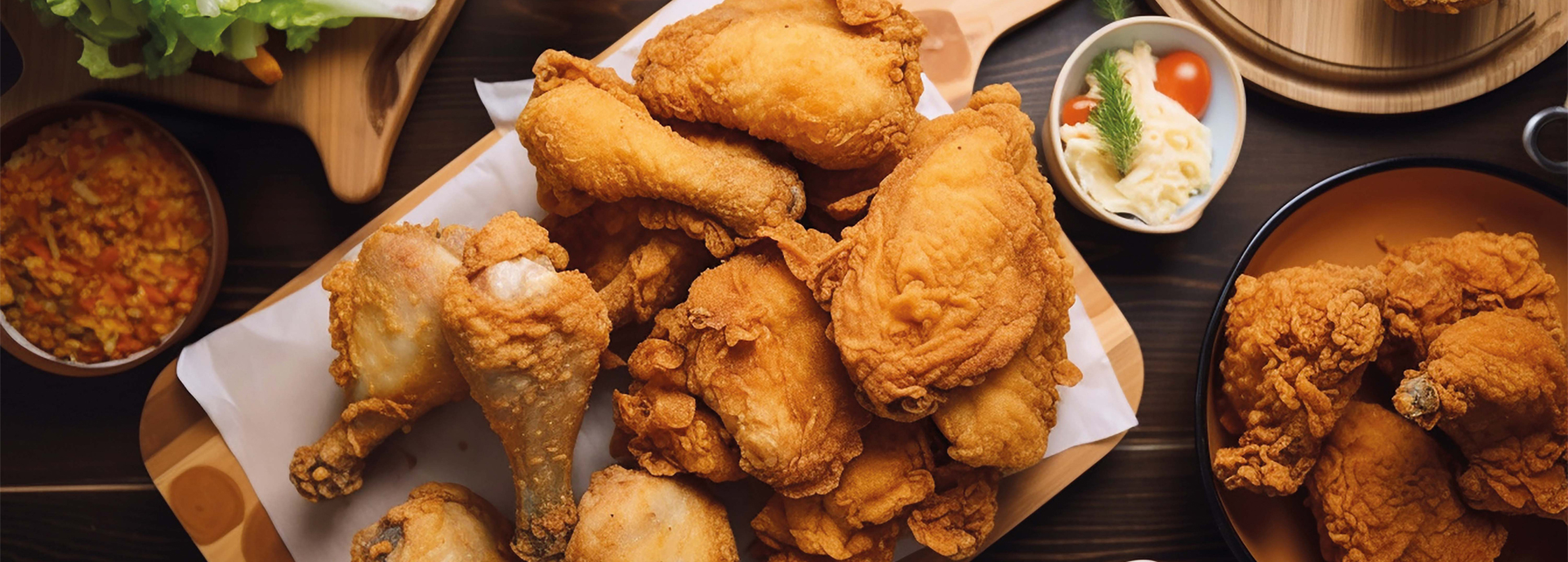


TAKEAWAYS
In the near term, foodservice players need to navigate such challenges as higher costs of borrowing, labour and ingredients. As post-COVID-19 dining adjusts to new economic realities, foodservice players should keep abreast of changing consumer preferences. This may include easy cooking at home in lieu of out-of-home dining to save on costs. For others, food delivery has become more entrenched, even as safe management measures are no longer in place.
Demand for more convenience is structural, and so is the need for different price points. Packaged food and beverage (F&B) sales of easy preparation and wellness categories – which performed better than on-the-go categories during COVID-19 – continue to see growth despite the lifting of pandemic restrictions. Likewise, quick service restaurants (QSRs) have gained market share, while the foot traffic to foodservice outlets have lagged foot traffic to grocery stores. These changes require foodservice players to continue investing in multiple touchpoints to broaden their reach, and also invest in supply chain reliability, flexibility and diversification.
Over the long term, foodservice is expected to expand faster than food retail, underpinned by the demographic shift and urbanisation. This offers opportunities for foodservice companies to grow their footprint, and to provide value-added services. Whichever strategy they undertake, the momentum in digitalisation and sustainability is likely to continue.
While foodservice footfalls post-COVID-19 continue to recover since early 2022, their pace has varied across ASEAN-4, comprising Indonesia, Malaysia, Singapore and Thailand. Based on Google Mobility data between February 2020 and October 2022, restaurant footfalls in some countries (taken from visits to retail and recreation outlets as a proxy) have reverted to pre-pandemic levels. On the other hand, footfalls in food retail outlets (taken from visits to grocery stores and pharmacies as a proxy) by end-2022 have mostly exceeded pre-pandemic levels and outperformed those in retail and recreation. This suggests that consumers may be spending more on groceries than out-of-home meals. The exception is Singapore, where footfalls in retail and recreation have overtaken those to grocery stores and pharmacies.
As higher input costs are passed on to consumers, consumption behaviour is adapting in different ways. In some segments, these adjustments may include fewer trips to foodservice outlets and/or a smaller ticket size per visit. In food retail, some demand may have shifted towards private labels, smaller packaging, and/or substitution of discretionary goods.
The packaged food retail data also suggests that certain categories, such as easy preparation meals and wellness, have gained ground. Compared to others, these categories have seen their volumes grow faster post-pandemic (Figure 1), and are expected to be maintained at a faster pace relative to other categories. This trend may not only be borne out of demand for more convenience due to return to work, but may also be partly due to ongoing demographic shifts, and as part of bringing the foodservice experience home to save on costs. On the other hand, on-the-go categories that had suffered during the pandemic have only gradually started to recover (Figure 2).
Figure 1 Easy preparation and wellness categories1 saw new growth since pandemic (indexed)

Figure 2 On-the-go categories2 have seen volumes recovering since reopening (indexed)

Consumer spending on foodservice remains largely discretionary amid the intensely competitive environment. In most cases, the F&B industry (both food retail and foodservice) uses consumer insights to support its business goals. Today, the foodservice industry needs to keep abreast of the fast-changing consumer preferences through digitalisation. This involves increased adoption of food delivery – which has opened doors to real-time data – as well as various cloud-based management software and hardware. Data is also typically shared within a franchise, where franchisors provide trends with its franchisees and outlets across different regions for potential test cases.
Digitalisation enables the foodservice industry to gain insights into actual consumer preferences, and, historical trends can also be evaluated. It also enables automation, which is important to improve not just the customer experience, but also the operational efficiency between team members which, in turn, may minimise employee turnover. For this purpose, digital insights and data providers would be able to provide foodservice brands with specific trends, in addition to order flows from delivery aggregators.
As consumers demand greater accessibility, a presence at various touchpoints is vital for packaged F&B brands as well as foodservice. The digital channel – through own and/or third-party platforms – can be accessed not only for food delivery but can also be used as a means for product launches, specific promotions or loyalty programmes to understand consumer trends relevant for product development and pricing points.
According to e-Conomy SEA 2022 report by Google, Temasek and Bain & Company, the gross merchandise value (GMV) of food delivery in Southeast Asia (covering Indonesia, Malaysia, Philippines, Singapore, Thailand and Vietnam) was estimated to have grown from US$5 billion in 2019 to US$17 billion in 2022, representing 50% CAGR over the three-year period. By 2025, a slower expansion of 13% CAGR is expected, to US$24 billion. While less aggressive, Euromonitor International similarly estimates that food delivery GMV in ASEAN-4 would continue expanding 6% CAGR over the next three years, to reach US$18 billion by 2025F. This accounts for roughly 20% of overall foodservice value, although each country would have different penetration rates (Figure 3). Overall, food delivery share remains sizeable, given the inherent fragmentation in the industry.
Figure 3 Share of food delivery to overall foodservice value

Another channel through which the foodservice industry has been able to grow rapidly is the chain kiosk model. The proliferation of this model reflects consumer demand for affordable and convenient offerings, and one that can be nimble, requiring low initial investment for each outlet or franchisee. Driven by a low-cost format, the chain kiosk can rapidly replicate a proven concept and is hence a volume-driven model (as opposed to royalty-focused or innovation-focused). For this reason, the payback period per outlet would typically be less than one year, which is much quicker than the average of three to five years for a global chain QSR outlet. Chain kiosk outlets were estimated to have expanded 2% to 19% CAGR between 2016 and 2019 in Indonesia, Malaysia and Thailand, according to Euromonitor International. However, between 2019 and 2021, growth had slowed to 17% in Malaysia and 1% in Thailand, and even shrunk by 3% in Indonesia due to COVID-19 mandated cuts in the operating hours and movement restrictions. While chain kiosk product offerings are limited, fierce competition still necessitates a refresh in outlet appearance every few years, as well as seasonal products outside of its core menu.
Occupying a sizeable share in foodservice sales today, online food deliveries have supported an alternative model consisting of a kitchen without a restaurant front. Cloud kitchens cater solely for food delivery or collection (B2C), for which the order is received online (through own and/or third-party aggregator platforms). It is differentiated from central kitchens, which supply cooked/semi-cooked food for chain restaurant outlets (B2B). Cloud kitchens in ASEAN-4 receive orders from customers directly through delivery aggregator platforms or own ordering platforms. The drawback of being dependent on aggregators is that the platforms capture all the data and demand trends from a wider target audience that foodservice players can otherwise analyse to finetune their offerings. Hence, as a direct-to-consumer brand, having an own platform would help to enhance competitiveness in this data-driven economy.
Cloud kitchens can supply to virtual brands (brands that exist only on aggregator platforms) within a limited radius to ensure freshness and lower delivery cost. Yet, while cloud kitchens should remain relevant as a share of the industry to fill the demand for convenience, there are challenges, namely:
Post-COVID-19, the need for a resilient supply chain is a key focus area, and one which would involve diversification of qualified suppliers to minimise disruptions, such as those experienced during the pandemic. Yet, the onboarding process for branded QSRs typically requires extensive due diligence. Therefore, a simplified onboarding process would be necessary. As perishable food ingredients require appropriate storage and handling at the right temperatures, logistics is a segment which QSR brands need control over, to avoid a mix-up in deliveries, food safety issues, and/or supply disruptions. Investments, such as live tracking and a cloud-based ordering system, would thus need to be integrated, to ensure that flow and quality to each outlet are not compromised. These include IT solutions as well as order fulfilment, inventory and logistics.
In ensuring foodservice brands address sustainable practices such as food waste and pollution, waste management is another increasingly important consideration. We believe collection and upcycling of used cooking oil (UCO) is a low-hanging fruit – given the monetary value of selling the used cooking oil – for foodservice players to enhance their sustainable practices. Between 2021 and 2026, we estimate UCO current collection volume in ASEAN-4 to collectively expand by 4% CAGR to 0.6 million MT. Today, only a fraction of the UCO potential volume is collected, given the several pain points for collectors, namely lack of scale, fragmentation and aggregation of logistics, particularly in rural areas, and low margin with intense working capital.
Given UCO’s cash value, there is currently no shortage of UCO collectors in Southeast Asia. While some collectors may have exclusive contracts (that is, periodic fixed pricing) with foodservice establishments, most collectors work on a daily spot basis. For chain restaurants and independent outlets, there is typically no contract to centrally organise collection, so each outlet has its own arrangement. Likewise, outlets located in shopping malls would typically have centralised disposal and collection, although not all malls have strict enforcement.
For branded QSRs, while not covered under general franchise agreements, UCO recycling would be an opportunity to promote their sustainability agenda with end-to-end traceability to prevent mishandling, which could impact the QSR’s brand image.
A full copy of this report is accessible at the UOB website.
Ben Santoso is Business Insights and Analytics – Sector Solutions Group, and Ernest Tan is Head of Consumer Goods – Sector Solutions Group, United Overseas Bank Limited.
IMPORTANT NOTICE AND DISCLAIMER
Nothing in this article constitutes accounting, legal, regulatory, tax, financial or other advice. If in doubt, you should consult your own professional advisers about issues discussed herein. The information contained in this article, including any data, projections and underlying assumptions, are based on certain assumptions, management forecasts and analysis of known information and reflects prevailing conditions as of the date of the article, all of which are subject to change at any time without notice. Although every reasonable care has been taken to ensure the accuracy and objectivity of the information contained in this article, United Overseas Bank Limited (“UOB”) and its employees make no representation or warranty of any kind, express, implied or statutory, and shall not be responsible or liable for its completeness or accuracy. As such, UOB and its employees accept no liability for any error, inaccuracy, omission or any consequence or any loss/damage howsoever suffered by any person, arising from any reliance by any person on the views expressed or information in this article.
United Overseas Bank Limited Co. Reg. No. 193500026Z
1 Category includes: reduced-sugar carbonates, flavoured yoghurt, instant noodles, RTE cereals, cheese, savoury snacks, frozen processed seafood, vitamins & derivatives, fresh coffee, plant-based milk (ex-soy)
2 Category includes: concentrates, confectionery, RTD tea, juice, energy drinks, sports drinks